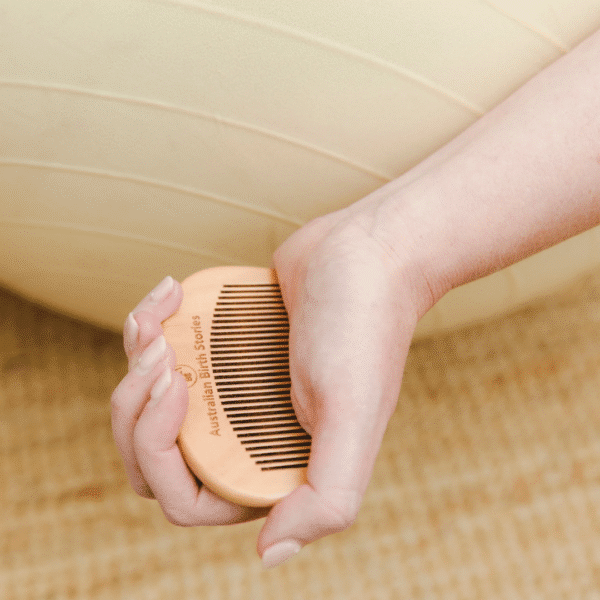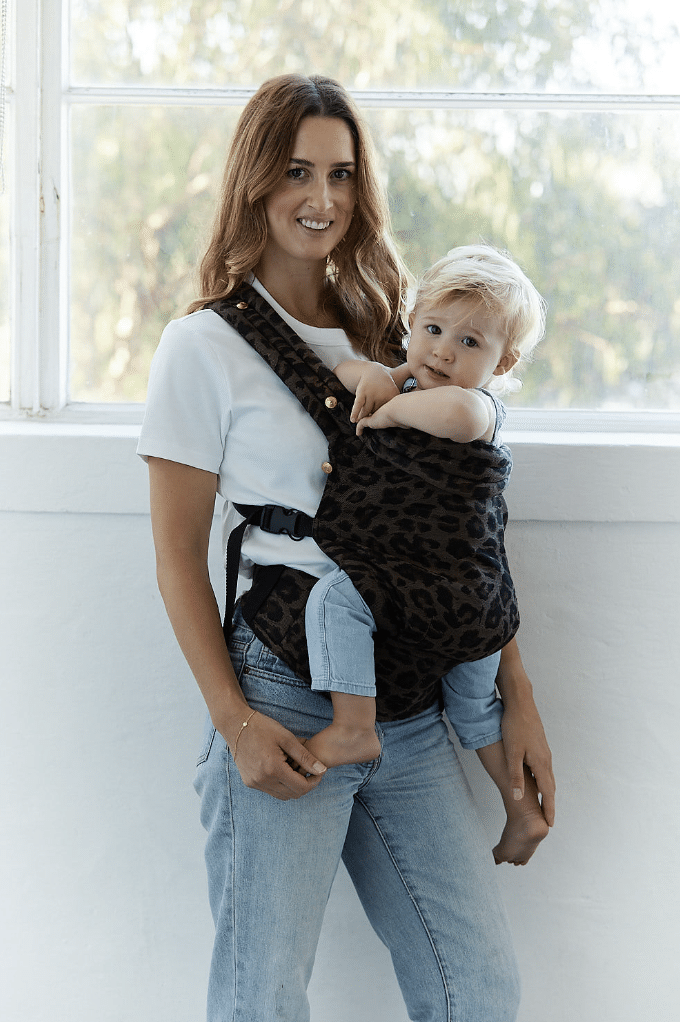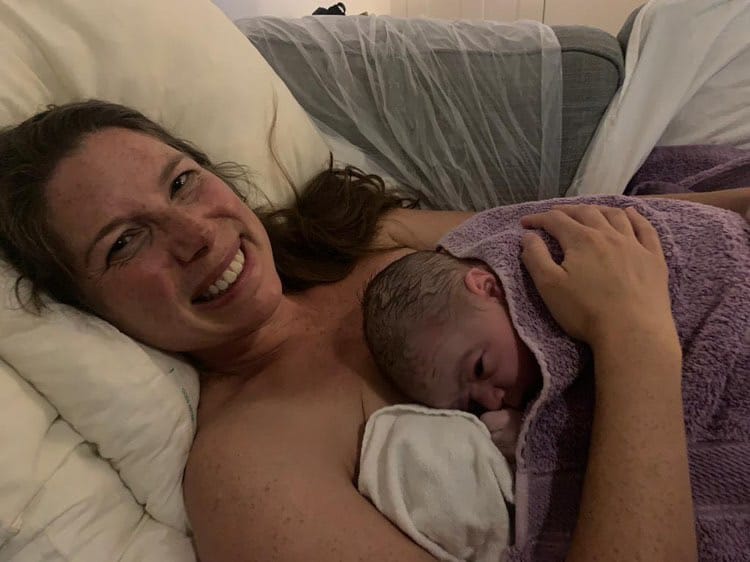Podcasts Andrea – insufficient glandular tissue, IGT, breastfeeding hypoplasia, triple-feeding, tongue tie, formula feeding
EPISODE 494
Andrea – insufficient glandular tissue, IGT, breastfeeding hypoplasia, triple-feeding, tongue tie, formula feeding

“You could file my story under what happens when breastfeeding doesn’t happen in spite of your best efforts. I have a condition called breast hypoplasia which is also known as insufficient glandular tissue (IGT) where the breasts don’t have enough milk-making and milk-storing tissue. A lot of the time it goes unnoticed because the anatomical signs can be subtle; features include widely-spaced breasts, areolas larger than average, one breast slightly larger than the other…but these are all common among women who don’t have IGT, too.
“It’s just not something I thought about in pregnancy. The first sign that I would easily detect now is that there wasn’t much change in my breasts in pregnancy but at the time I didn’t think anything of it. I had my son in late 2019 and I had a normal birth and he latched straightaway. It was quite painful to begin with and a lactation consultant observed that he had a significant tongue tie and a high palate and that was causing a strong albeit incorrect latch. We spent a lot of time going down that path to see if that was the cause of my low supply. I was a first-time mum and I just didn’t know what was normal.
“On day two, after a really tricky first night, he went almost 24 hours without a wet nappy. We had a pediatrician check him out and he was showing early signs of dehydration and recommended formula top-ups immediately. In a hospital setting, they are obliged to recommend exclusive breastfeeding because we know it’s nutritionally superior. The heartbreaking thing about that moment is that I was exhausted and deep in the baby blues and he had an umbilical infection so had a little IV in his arm. The midwives were also staunchly against me signing the consent form to feed my baby formula. The implication was that we can try harder and try different things.
“I gave him 10 ml of formula and went to sleep for two hours so then we moved onto problem-solving. No one had examined me closely so we asked a lactation consultant to observe the whole picture and she did say that women with my shaped breasts sometimes struggle to breastfeed and in that moment I was absolutely heartbroken. That was when I first realised that it might not happen for us. In true type-A style I went to work problem-solving and that involved a strict pumping schedule to increase my supply.
“Once we were discharged, I realised that the lactation consultant hadn’t actually given me a name for my condition and she was adamant that I just keep trying. On the way from the hospital I got a tin of formula from the chemist having not done any research which is so unlike me and then when we got home Leo was hangry, I was trying to latch him and we were trying to sterilise bottles, having never done it before. It was chaos and not at all how I envisaged that first day at home.
“Over the next ten days, we were power pumping, triple-feeding, I took domperidone but it didn’t help. Hats off to anyone who triple-feeds because it is so gruelling. He only got one bottle of breastmilk a day but I knew the nutritional value of it and even 50ml a day is beneficial. But also, my mental health was on the floor over the first few weeks.
“At around the 10-day mark we took him to get his tongue-tie snipped and the lactation consultant was one of the very very few health providers who knew about breast hypoplasia and gently informed me that she thought that was my issue. I so desperately needed a reason for why I was so challenged. The thing that really got me angry in the end, when I realised we would be largely formula feeding, I asked my doctor for advice on formula and they said they weren’t allowed to give it to me. I felt like I was having to justify the decision to give formula and educate health providers about my condition. I needed support and I was left out in the cold, made to feel like I was giving my baby a substandard milk. Formula is constantly positioned as an absolute last resort.
“Nowhere along my journey did anyone link my ‘breastfeeding failure’ with my mental health; no one looked at how I could be supported as a healthy, present, engaged, calm parent. I breastfed for 12 weeks and I would never have predicted that we’d get to that point at the start.
“With my daughter I was so much more prepared – practically and emotionally. One of the things I did which was so healing, was antenatal expressing. I also saw the lactation consultant at the hospital -I wanted all the information and advice. I’d explained my whole heartbreaking scenario and I knew so much about the condition – that I fit exactly – and still she was insistent that I ‘don’t give up’. I needed her to help me prepare so I could maximise the breast milk I do have and support me to create a plan so my feeding experience was more relaxed. I hired a private lactation consultant, I planned to triple-feed for two weeks and then reassess. It was also really important to check in with my mental health every day.
“It was triggering but also healing; I’d made some degree of peace with the fact that I had this condition, we had a plan and mentally I was much more grounded as a result. It was much calmer second-time around. Looking back, I can see a direct link between how breastfeeding was handled by health professionals and my perinatal anxiety and depression, mother guilt and my worth as a mother.”
Topics Discussed
breastfeeding hypoplasia, Formula feeding, IGT, insufficient glandular tissue, Lactation consultant, maternal mental health, Tongue-tie, triple-feeding
Episode Sponsor
Today’s episode is brought to you by Kiwi.co.
I must confess I’m not much of a crafty mum but Kiwi Co’s panda crate has been the best educational investment for Ottie. KiwiCo Panda Crate is a bimonthly subscription for babies ages 0-24 months. We receive a subscription box filled with playful, open-ended activities backed by research and designed especially for naturally curious and creative babies and toddlers.
KiwiCo Panda Crate products are not only safe and of high quality, but also age-appropriate and supportive of your baby’s growth.
I’m a big fan of quality activities that create the opportunity for play-based learning and Kiwi Co delivers hands-on projects that get the whole family involved. Whether you have a brand-new baby or a trailblazing toddler, the Panda Crate is perfect for your little one’s developing brain.
Unlock brain-building play with KiwiCo Panda Crate! Get 20% off your first crate with code BIRTHSTORIES at kiwico.com/panda
Categories
Related Products
-
Birth Combs: Harness Your Body’s Natural Pain Relief
$24.95Crafted from smooth, natural wood, our birth combs activate specific pressure points in your hands that trigger your body’s innate pain-relieving responses.
Join the conversation
Sign up to get the latest updates, freebies, podcast releases straight into your inbox
@AustralianBirthStories
Follow along with us
@AustralianBirthStories
Follow along with us
@AustralianBirthStories
Follow along with us
@AustralianBirthStories
Follow along with us
@AustralianBirthStories
Follow along with us
@AustralianBirthStories
Follow along with us
@AustralianBirthStories
Follow along with us
@AustralianBirthStories
Follow along with us
@AustralianBirthStories
Follow along with us
@AustralianBirthStories
Follow along with us
@AustralianBirthStories
Follow along with us
@AustralianBirthStories
Follow along with us






